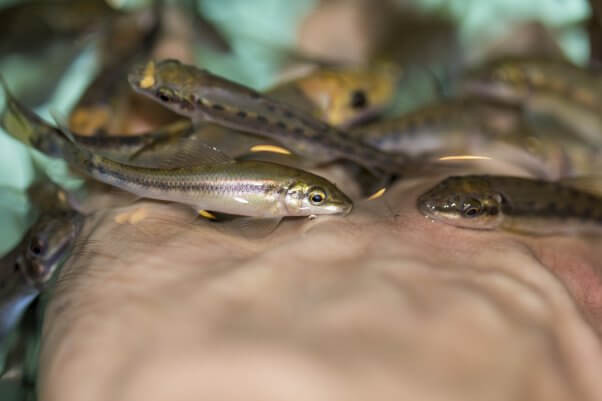Fish pedicures, once a trendy spa treatment, have faced bans in numerous locations across the U.S., Canada, and Europe. This isn’t due to changing fashion; it’s because of serious concerns about both hygiene and animal welfare. When considering a fish spa, it’s crucial to understand the reality behind the supposed benefits, particularly concerning the fish involved and the potential risks.
One of the primary reasons to avoid fish pedicures revolves around the fish themselves. The species most commonly used in these treatments is Garra rufa, often referred to as “doctor fish” or by their Fish Spa Fish Name in the industry. Contrary to popular belief, these fish aren’t naturally inclined to eat dead skin. They only do so when driven by extreme hunger, a direct result of starvation in fish spa environments. This forced feeding behavior is inherently cruel.
These Garra rufa fish originate mainly from regions in Turkey, Syria, Iraq, and Iran. In fact, the Turkish government has had to implement legal protections for Garra rufa populations within its borders to combat the detrimental effects of overfishing and exploitation driven by the fish spa industry. The demand for these fish in pedicures has led to unsustainable harvesting and placed a strain on their natural populations.
The journey for these fish from their native habitats to fish spas is often fraught with danger. Importers make these fish widely available, shipping them across long distances in water-filled plastic bags. A significant number of these delicate creatures do not survive these stressful transportation conditions, highlighting the callous disregard for their well-being in the pursuit of profit.
Hygiene in fish spas is another major concern. Pedicure tubs filled with fish are inherently difficult to disinfect adequately between customers. Sanitizing the fish themselves is impossible. This creates a breeding ground for bacteria and significantly increases the risk of cross-contamination. Individuals with contagious conditions like nail fungus or athlete’s foot unknowingly put themselves and others at risk when they seek fish pedicures, as these conditions can easily spread in such unsanitary environments.
Furthermore, fish, like all living beings, produce waste. In fish pedicure tubs, this waste accumulates, further compromising hygiene. This build-up of organic matter in the water creates an environment that is far from clean and can contribute to the spread of bacteria and potential infections.
For those seeking effective exfoliation, a pumice stone or professional pedicure by a trained human technician remains the superior and safer option. Fish are not precise exfoliators; they randomly nibble, and there’s no control over where they focus. Customers have reported uneven skin texture and instances where the fish have bitten too aggressively, causing bleeding and discomfort. The promise of smooth, even skin is often unmet, and the experience can be far from relaxing.
Fish pedicure tubs, with their warm water and organic matter, create an ideal breeding ground for harmful bacteria. Even minor cuts or abrasions on the feet can become infected when submerged in these tubs. This risk is amplified by the fact that Garra rufa fish themselves have been found to carry various infection-causing bacteria, including Streptococcus agalactiae, which can cause pneumonia, and other antibiotic-resistant strains. Exposure to these bacteria in a fish spa setting poses a significant health risk to customers.
Ultimately, fish are sentient beings, not disposable beauty tools. They deserve to live free from exploitation and suffering. Choosing a safe, hygienic, and cruelty-free pedicure from a qualified human technician, or opting for a DIY treatment at home, is a compassionate and responsible alternative to supporting the inhumane fish spa industry. Understanding the reality behind the fish spa fish name and the practices involved reveals a clear picture of animal cruelty and potential health risks that should deter anyone from participating in this harmful trend.






